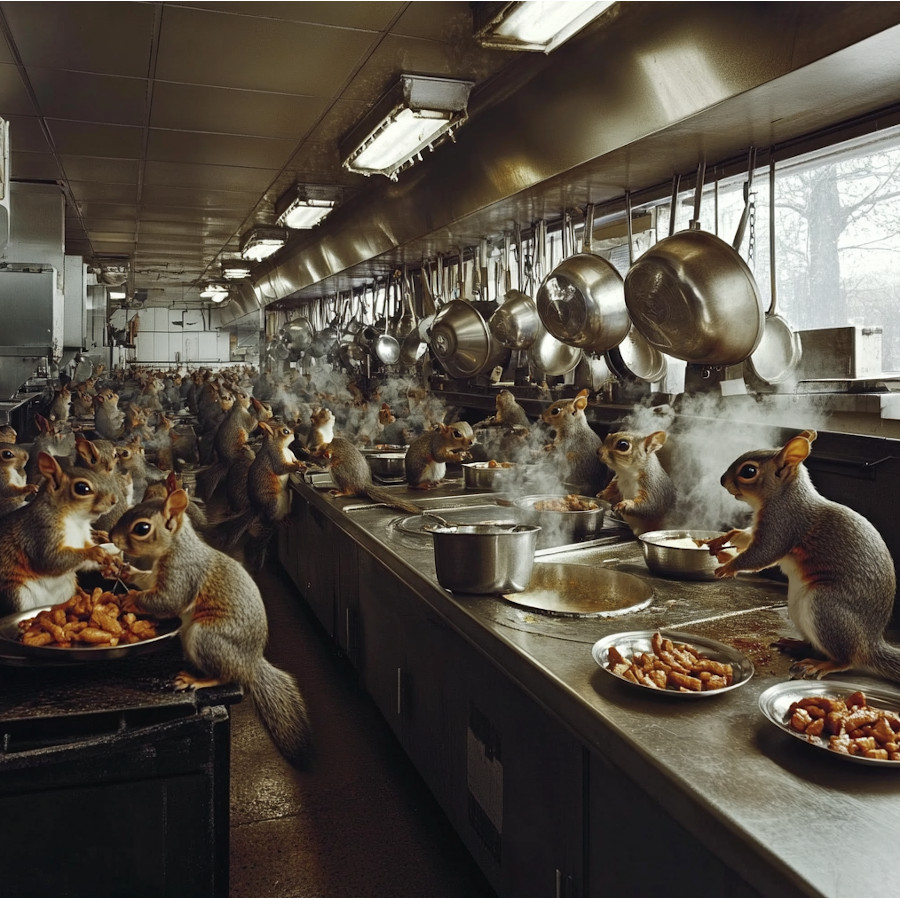October 10, 2024
Weekly Newsletter:
Skipping Meals & Fixing Prices
On the tail of Hurricane Helene, Hurricane Milton relentlessly dominated the news cycle. Nevertheless, ongoing topics of lowering food prices and improving health surfaced as important.
- Industry and government tackled food prices, focusing on beef.
- Researchers, government and business got serious about obesity.
- Alternative proteins remain gridlocked between innovation and adoption.
Beefs With Beef

Although inflation has plateaued, food prices remain a key factor in perceptions of both the economy and individual brands. To absolutely no one’s surprise, there has been a surge in assigning blame.
- Supermarket Perimeter shared a study that found 86% of consumers said grocery prices are the most frustrating source of inflation.
- On Oct. 4, McDonald’s filed a lawsuit alleging that Tyson, JBS, Cargill and National Beef Packing Company have colluded since 2015 to keep beef prices high (The Associated Press).
- Fast Company noted that the burger chain’s Oct. 10 introduction of the Chicken Big Mac continues a trend of prioritizing chicken over beef and fits into a broader strategy to “win back lower-income customers and fight perceptions that it’s getting too expensive.” Chicken is definitely the “cheep” strategy.
- On Oct. 8, the Biden administration announced three measures to “promote more competitive food supply chains,” two of which relate to beef pricing. In particular, the USDA is seeking comments on how to ensure that farmers know what a fair price is for selling their cattle to processors.
- Meat Institute President and CEO Julie Anna Potts retorted: “When USDA says it wants to ‘enhance fairness’ in cattle markets, they mean pick winners and losers.”
- The National Cattlemen’s Beef Association balked at the move and requested disaster relief instead.
- National Farmers Union President Rob Larew thanked the administration, calling out an initiative that “helps to guarantee that seed choices are not limited by monopolistic practices but are driven by innovation and the demands of sustainability.”
Our Takeaway: Freedom of competition and availability of information in the marketplace are tricky to balance across complicated supply chains. The added pressure of food price inflation has only amplified the finger-pointing between consumers, politicians, brands and industry groups.
Time-restricted Health

Fasting, working out, processed foods and weight-loss drugs have entered the health and nutrition chat. Perhaps it’s anticipation of cuffing season or motivation to look good in a Halloween costume, but we’re seeing chatter on the topic comparable to the New Year’s resolution bump.
- WebMD documented two decades of time-restricted eating (aka intermittent fasting) research, including many myths and health risks. One early study on the practice changed direction quickly: “Mice are just not good models for fasting. They have really, really high metabolic rates. If you fast a mouse for a day, that’s like fasting a human for a week,” one researcher concluded.
- Nutritionfacts.com founder and fasting advocate Michael Greger, MD, explained many nuances of the practice. This included “the largest study on fasting in the world” — the holy month of Ramadan, during which devout Muslims fast from sunrise to sunset. Greger commented: “Fasting as a therapeutic measure has a long history, but its potential benefits beyond weight loss are numerous and underexplored.”
- In the New York Times’ “Ask Well” section, writer Lisa McCarty explored whether eating before or after a workout is more beneficial. Fortunately the answer is “yes.”
- Food Safety News editor Dan Flynn summarized many rumblings in Washington, D.C., flying under the “Make America Healthy Again” (MAHA) banner. Big names like Robert F. Kennedy Jr., the House Ways and Means Committee’s subcommittee on health and Sen. Ron Johnson (R-Wis.) all added to the theme. Flynn stated: “The idea that is being explored is that America’s processed food is making people sick with everything from obesity to diabetes and more.”
- Food Politics blogger Marion Nestle covered a MAHA discussion hosted by Sen. Johnson in September. She noted the unlikelihood of both the hosts (Senate Republicans) and speakers (“influencers,” not scientists), but concluded: “Could it be that we are heading for bipartisan support for addressing epidemic obesity and diet-related chronic disease?”
- In her Food Fix newsletter, Helena Bottemiller Evich argued for a clinical definition of obesity, especially with the rising popularity of GLP-1 drugs. On the same note, Bloomberg outlined how major food brands are reacting to GLP-1s: smaller portion sizes, like sippable soups and single-serve frozen meals. So long, Hungry Man Salisbury Steaks?
Our Takeaway: The common thread of these health conversations is noncommunicable disease control and prevention. A large chunk of the U.S. population is overweight, leading to an alarming number of preventable illnesses. Everyone but consumers seem to be formulating and adopting solutions.
Nü Meat Nüz

It’s been a hot minute since we heard much buzz around plant-based and lab-grown proteins. As the alternative meat sector grapples with a trough in interest and adoption, ingredient companies continue to innovate.
- Plant-based burgers vs. real meat. How to decide what’s best for you. | The Washington Post
- Pa. pols pushing for cultivated meat ban bill | Meatingplace
- Ohio latest state to debate alt-meat labels | Meatingplace
- Podcast: What happens after this cooling off phase for plant-based products? | Supermarket News
- Cultivated meat won’t cross valley of death without public funds | AgFunder News
- Steakholder Foods Opens Demonstration Center | Food Engineering
- Impossible Foods launches 3 new family-friendly products | Food Dive
- Kerry introduces egg reduction tool for cost-effective and sustainable baking | Food Ingredients First
- Slideshow: Innovation in the plant-based meat space | Food Business News
“You can have the best science, the best documented food safety procedures, policies and rules in the world, but if they’re not put into practice by people, they’re useless.”
Frank Yiannas, Smarter FY Solutions

Amid a fatal Listeria outbreak, Boar’s Head announced it would appoint a chief food safety officer. And boy did they. Former FDA Deputy Commissioner for Food Policy and Response Frank Yiannis will assume that role in an interim capacity effective immediately. Yiannis is both exceptionally and impeccably credentialed, as evidenced by his CV and impressive personal website. We wish him good fortune.
“This is a tremendous relief to everyone in the U.S. meat and livestock industries, as about $100 million worth of beef and pork products are exported every week through East and Gulf Coast ports.”
USMEF statement on East and Gulf Coast port agreement
Worth Reading
Ports Reopen
After striking for three days, port workers came to terms with the Maritime Alliance to suspend the strike and resume operations at the country’s Gulf and East Coast ports (Reuters). The two sides came to a tentative deal on wages and agreed to return to the bargaining table on outstanding issues before Jan. 15, 2025. The U.S. Meat Export Federation noted that more than $100 million of beef and pork products are exported through affected ports, and the American Farm Bureau Federation estimated $1.4 billion in weekly agricultural trade was at risk.
Caffeination Innovation
Following Starbucks’ recent purchase of two innovation farms in Central America, Agriculture Dive highlighted how companies are seeking to address the biggest production barriers. Amid rising temperatures and demand, Starbucks’ farms will study hybrid coffee varieties to advance research and development of climate-resilient coffee. With plans for future farm investments, this seems to be just the beginning for the coffee giant.
Pack to the Future
Packaging innovations are making waves overseas, but will they have a global impact? Food Ingredients First explained how scientists in Singapore have used upcycled fruit waste to develop a biodegradable food wrap that changes color when its contents have spoiled. Meanwhile, The Wall Street Journal detailed a subtle-but-effective feature that enables European beverage companies to reduce litter: the attached bottle cap.
Hack or Whack?
In an article spurred by Starbucks’ introduction of two beverages featuring a dried green powder sold by AG1 (née Athletic Greens), author Yasmin Tayag argued that the “slog” of actually preparing and eating vegetables is hardly a problem. While these drinks signal health and promise benefits from energy to gut health, today’s widespread availability of cheap tasty greens means converting them to “baby food” is hardly a hack. The raw form of the vegetables are healthier across every nutritional measure. Perhaps broccoli just needs better PR.
Tree Chicken Fingers
Every year, thousands gather in Bentonville, Arkansas, to compete for the title of “World Champion Squirrel Cooker.” With everything from empanadas to egg rolls, it’s a celebration of an old-school American delicacy wrapped up in modern culinary innovations. As one of the competitors quipped: “Iberico pork is finished on acorns, and squirrels eat acorns all the time.” (Eater)


Midjourney illustration by Ryan Smith
Related Articles:
Look! No Election Coverage!
Weekly Newsletter | November 7, 2024
Thank you for subscribing to Plated by Bader Rutter. What started as a weekly internal memo for keeping our agency ...
Plated Away From Home
Weekly Newsletter | October 31, 2024
The E. coli issue at McDonald’s (and Yum! Brands) goes on. Product development and menuing innovation carries on. Restaurant chain ...
Winds of Change
Weekly Newsletter | October 17, 2024
Hurricane relief and recovery efforts get on track. Dairy producers seek sustainability. Big manufacturers adapt strategy.
Coast to Coast Crises
Weekly Newsletter | October 3, 2024
Hurricane Helene ravaged the Southeast. Workers shut down ports from Maine to Texas. California went on a banning spree.
Of Lids and Lawsuits
Weekly Newsletter | September 26, 2024
High-profile lawsuits in the courts may determine future policy. Sustainability drives changes in packaging. Early fall means new product launches ...
